Gastornis parisiensis Hébert, 1855

Phylum: Chordata Haeckel, 1874
Subphylum: Vertebrata Cuvier, 1812
Classe: Aves Linnaeus, 1758
Ordine: Gruiformes Bonaparte, 1854
Famiglia: Gastornithidae Fürbringer, 1888
Genere: Gastornis Hébert, 1855
Specie e sottospecie
Il genere annovera attualmente le seguenti specie: Gastornis gigantea Cope, 1876 (originariamente Diatryma) - Gastornis sarasini Schaub, 1929 - Gastornis geiselensis Fischer, 1978 (originariamente Diatryma) - Gastornis russeli Martin, 1992 - Gastornis xichuanensis Hou, 1980.
Descrizione
Il Gastornis era alto 1,75 metri, un po' meno del Diatryma, un uccello della stessa famiglia, che raggiungeva i 2 metri. (Vi sono stati dei dibattiti scientifici molto accesi sull'opportunità di unire il genere Gastornis con quello Diatryma per le caratteristiche quasi uguali dei due uccelli.) Questi terribili uccelli avevano in comune il loro tremendo becco a forma di falcetta, che serviva a spolpare la carne delle prede, ma anche per rompere le ossa delle vittime. Altri giganti simili al Gastornis furono i Phorusrhacos e il Titanis delle Americhe e il Genyornis dell'Australia. Il Gastornis si nutriva dei piccoli animali che vivevano nelle foreste della Germania. Le sue prede preferite erano i piccoli Leptictidium e i cavallini Propalaeotherium e Hyracotherium. Il nome Gastornis si riferisce al nome del suo scopritore Gaston Planté. Vi sono stati dei dibattiti scientifici molto accesi sull'opportunità di unire il genere Gastornis con quello Diatryma per le caratteristiche quasi uguali dei due uccelli.
Diffusione
Vissuto in Europa nel Paleocene superiore e nel primo Eocene.
Sinonimi
= Diatryma Cope, 1876 = Barornis Marsh, 1894 = Omorhamphus Sinclair, 1928 = Zhongyuanus Hou, 1980.
Bibliografia
–Cécile Mourer-Chauviré; Estelle Bourdon (2020). "Description of a new species of Gastornis (Aves, Gastornithiformes) from the early Eocene of La Borie, southwestern France" (PDF). Geobios. 63: 39-46.
–Prévost, Constant (1855). "Annonce de la découverte d'un oiseau fossile de taille gigantesque, trouvé à la partie inférieure de l'argile plastique des terrains parisiens ["Announcement of the discovery of a fossil bird of gigantic size, found in the lower Argile Plastique formation of the Paris region"]". C. R. Acad. Sci. Paris (in French). 40: 554-557.
–Buffetaut, E., and Burrrraur, E. (1997). "New remains of the giant bird Gastornis from the Upper Paleocene of the eastern Paris Basin and the relationships between Gastornis and Diatryma." N. Jb. Geol. Palâont. Mh., (3): 179-190.
–Martin L.D. (1992). "The status of the Late Paleocene birds Gastornis and Remiornis". Papers in Avian Paleontology Honoring Pierce Brodkorb. Natural History Museum of Los Angeles County, Science Series. 36: 97-108.
–Lemoine, V. (1881a). Recherches sur les oiseaux fossiles des terrains tertiaires inférieurs des environs de Reims. Vol. 2. Matot-Braine, Reims. pp. 75-170.
–Lemoine, V. (1881b). "Sur le Gastornis Edwardsii et le Remiornis Heberti de l'éocène inférieur des environs de Reims ["On G. edwardsii and R. heberti from the Lower Eocene of the Reims area"]". C. R. Acad. Sci. Paris (in French). 93: 1157-1159.
–The biologist's handbook of pronunciations (1960).
–Cope, Edward Drinker (1876). "On a gigantic bird from the Eocene of New Mexico". Proceedings of the Academy of Natural Sciences of Philadelphia. 28 (2): 10-11.
–Feduccia, Alan (1999). The Origin and Evolution of Birds (2nd ed.). New Haven: Yale University Press.
–Matthew W.D.; Granger W.; Stein W. (1917). "The skeleton of Diatryma, a gigantic bird from the Lower Eocene of Wyoming". Bulletin of the American Museum of Natural History. 37 (11): 307-354.
–Mlíkovský, Jirí (2002). Cenozoic Birds of the World, Part 1: Europe (PDF). Prague: Ninox Press. Archived from the original (PDF) on 20 May 2011.
–Witmer, Lawrence; Rose, Kenneth (1991). "Biomechanics of the jaw apparatus of the gigantic Eocene bird Diatryma: Implications for diet and mode of life" (PDF). Paleobiology. 17 (2): 95-120.
–Angst D.; Lécuyer C.; Amiot R.; Buffetaut E.; Fourel F.; Martineau F.; Legendre S.; Abourachid A.; Herrel A. (2014). "Isotopic and anatomical evidence of an herbivorous diet in the Early Tertiary giant bird Gastornis. Implications for the structure of Paleocene terrestrial ecosystems". Naturwissenschaften. 101 (4): 313-322.
–Mustoe G.E.; Tucker D.S.; Kemplin K.L. (2012). "Giant Eocene bird footprints from northwest Washington, USA". Palaeontology. 55 (6): 1293-1305.
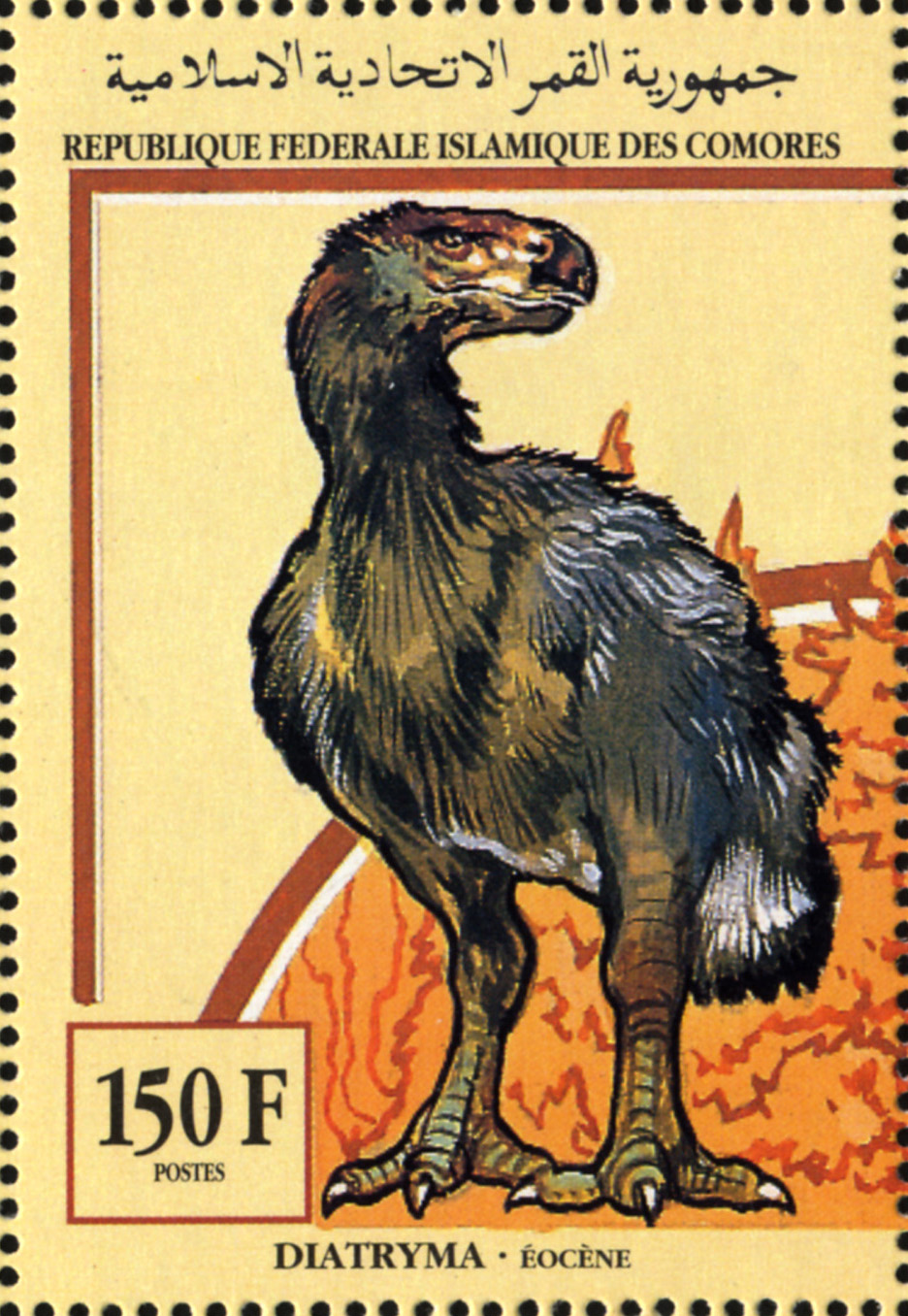
|
Data: 05/04/1994
Emissione: Animali preistorici Stato: Federal and Islamic Republic of Comoros Nota: Emesso in un foglio di 16 v. diversi |
|---|
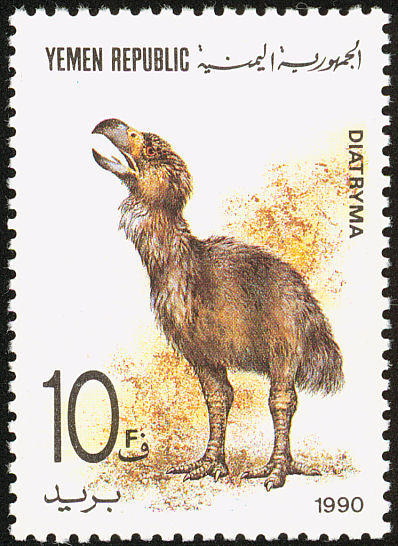
|
Data: 27/11/1990
Emissione: Animali preistorici Stato: Yemen Republic |
|---|
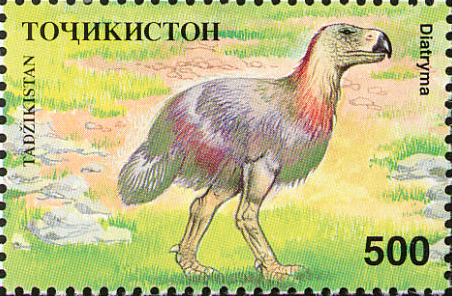
|
Data: 08/09/1994
Emissione: Animali preistorici Stato: Tajikistan Nota: Emesso in minifoglio di 8 v. diversi e una vignetta centrale e in minifogli di 9 v. uguali |
|---|
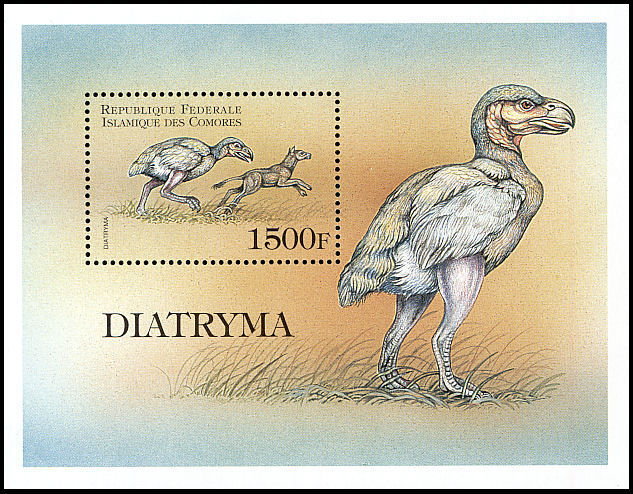
|
Data: 25/01/1999
Emissione: Animali preistorici Stato: Federal and Islamic Republic of Comoros |
|---|
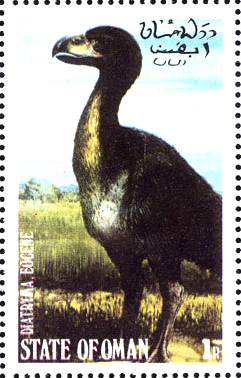
|
Data: 01/01/1975
Emissione: Animali preistorici Stato: Oman Nota: Emesso in un foglietto di 8 v. diversi |
|---|

|
Data: 27/08/2018
Emissione: Faccia a faccia con gli animali preistorici Stato: Belgium Nota: Emesso in un foglietto di 2 serie |
|---|
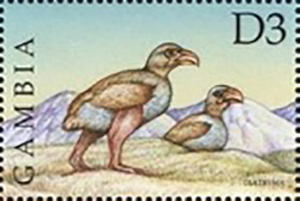
|
Data: 01/08/1999
Emissione: Animali preistorici Stato: Gambia |
|---|
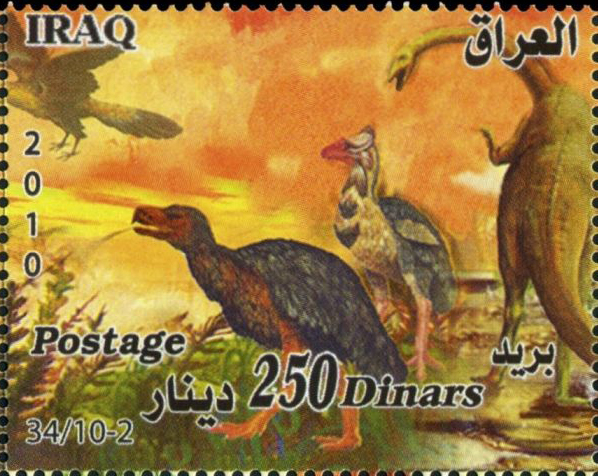
|
Data: 28/06/2010
Emissione: Animali preistorici Stato: Iraq Nota: Emesso in un blocco di 8 v. diversi |
|---|
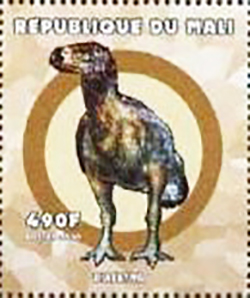
|
Data: 25/09/2000
Emissione: Animali preistorici Stato: Mali |
|---|
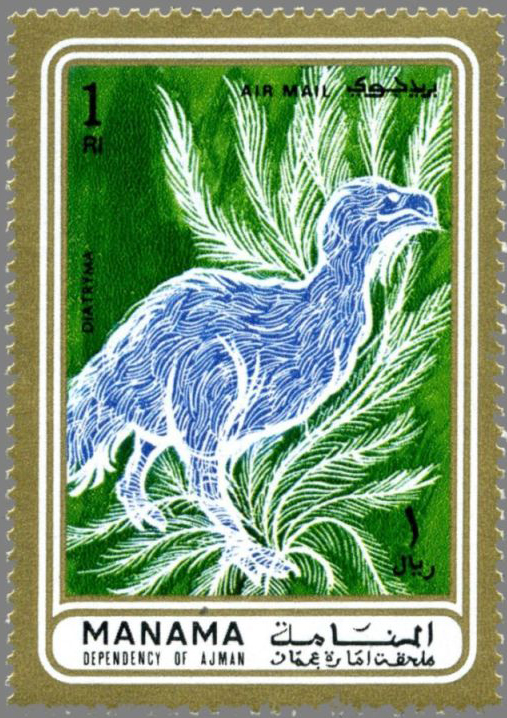
|
Data: 01/01/1971
Emissione: Animali preistorici Stato: Manama |
|---|
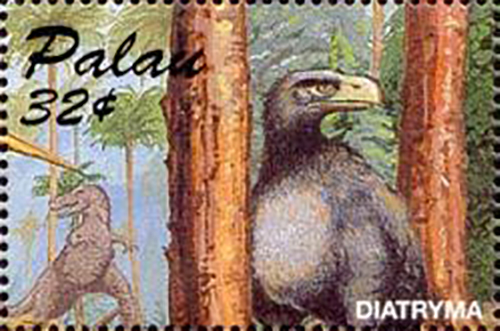
|
Data: 22/04/1995
Emissione: Dinosauri Stato: Palau Nota: Emesso in un minifoglio di 18 v. diversi |
|---|
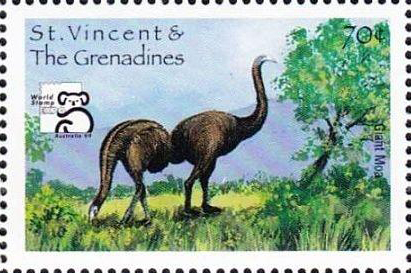
|
Data: 01/03/1999
Emissione: Mostra Filatelica Internazionale Australia 99 - Animali preistorici Stato: St. Vincent and the Grenadines Nota: Emesso in un foglietto di 12 v. diversi |
|---|
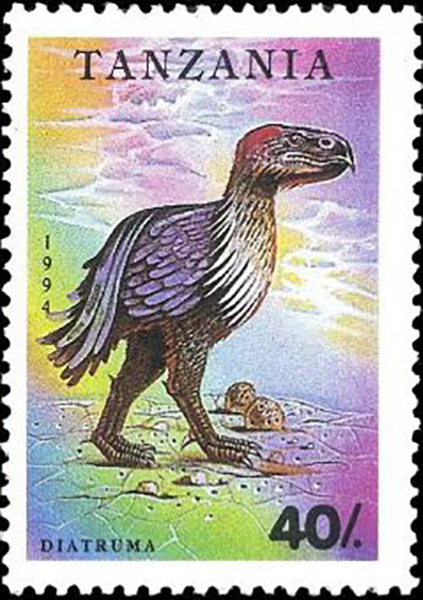
|
Data: 30/06/1994
Emissione: Animali preistorici Stato: Tanzania |
|---|